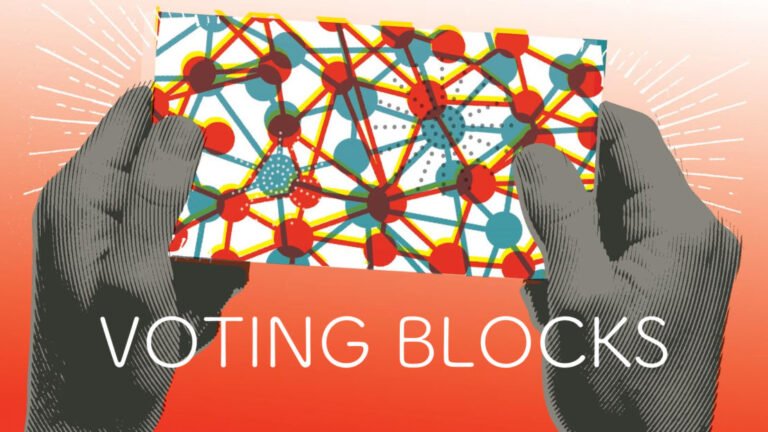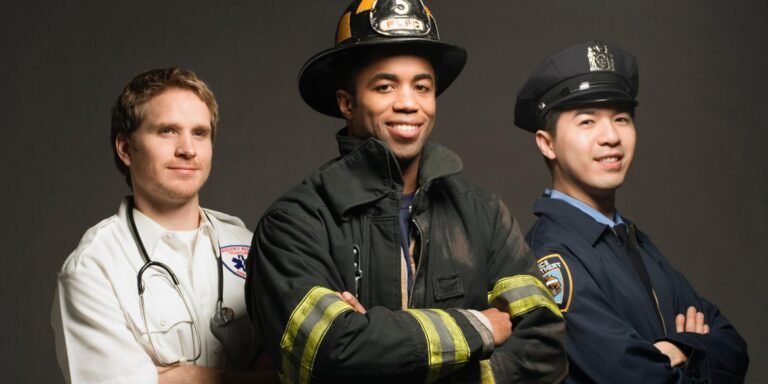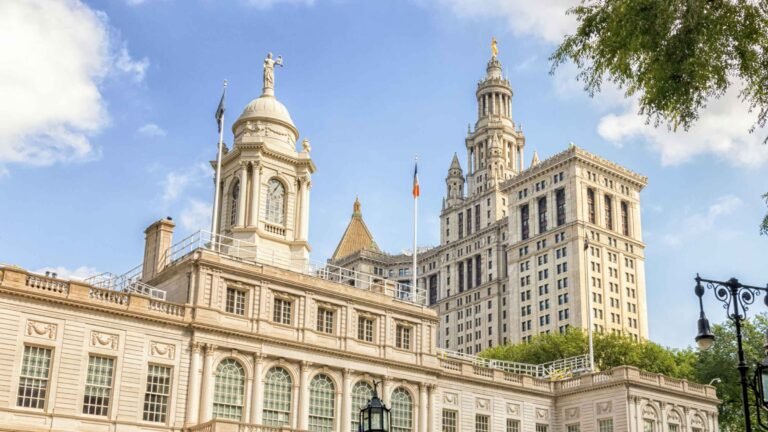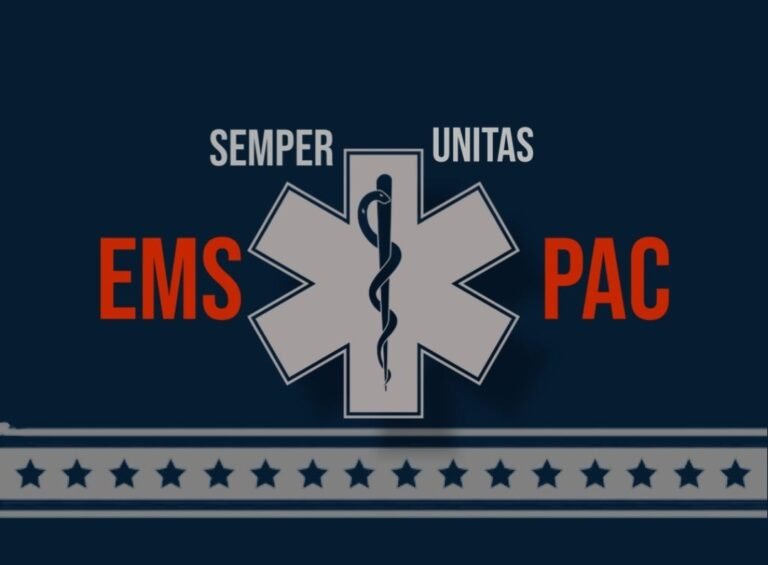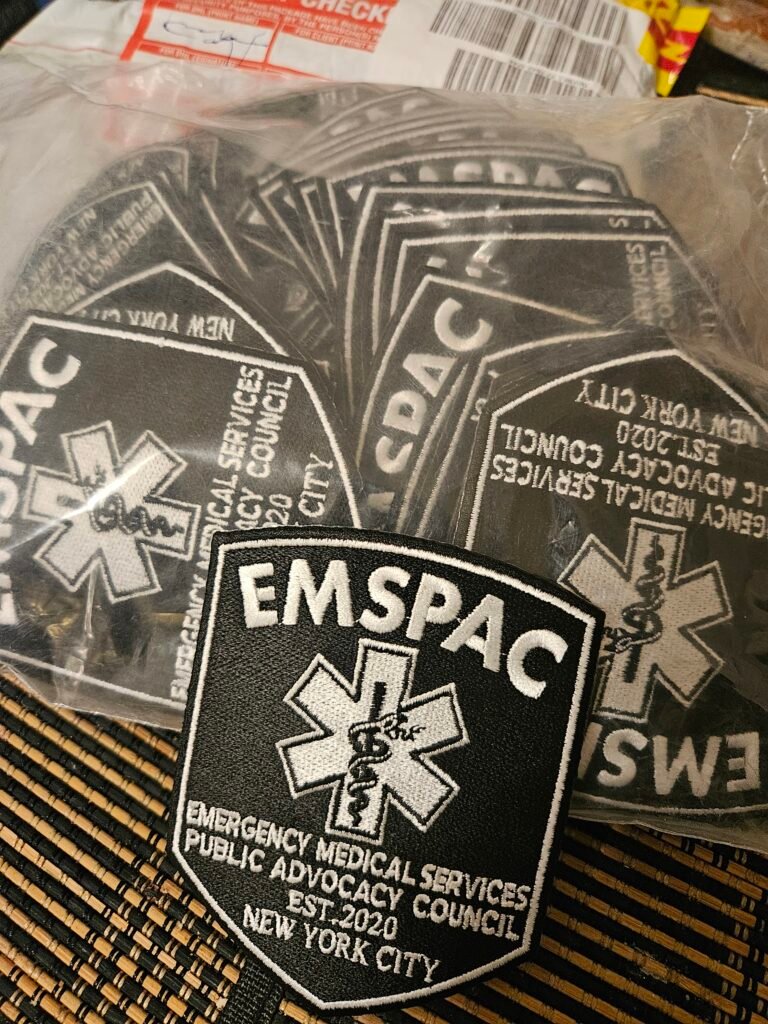
Why An EMS Votes Matters
The Core Elements of the EMS.PAC 501(c)4 Lobbying Strategy
We want to see EMS developed into an Essential, Uniformed Service with adequate funding, and a long term commitment for EMS to be paid and treated like Fire Suppression and Law Enforcement.
No politician will take the needs of EMTs and Paramedics seriously when we don’t stick together on issues that affect us. If we remain divided by agency and sectors, our issues will continue to be ignored. Something becomes a “political issue” when as few as 5 constituents call or email about it. We seek to launch a Political Action Committee 501(c)4 to work alongside the existing EMSPAC 501(c)3 to endorse pro-EMS candidates, frame legislation that actually benefits EMS professionals, and develop a united EMS Voting Block around politicians that explicitly support us.
Key Points
- “EMS Pay/Benefit Parity”, the “Mental Health and Physical Well-being of EMS workers”, and a number of “safety issues” need to be made into major political issues.
- Everything we are fighting for will ultimately come down to budget restructuring in City Hall and an EMS Omnibus Law on State and Federal levels.
- Most EMS workers do not currently vote.
- We definitely don’t vote in smaller local elections such as Community Boards, City Council, State Assembly, State Senate, and primary races of all kinds.
- There are 15,500 EMS workers in NYC and 70,000 in New York State
- Including the volunteers and those that have retired; there are as many as 4 million EMS across the country.
- If we vote as a “Bloc” around Pro-EMS issues alongside our families our political influence would be massive, marshaling approximately 50,000 + votes in the New York Area alone.
- Most of us vote for President or the Governor, but are we all familiar with our City Council members and our State representatives? Do we ever vote in primaries?
- These local elections get decided by sometimes as few as several hundred votes.
- EMSPAC wants to appoint 51 District Mobilizers to coordinate and deliver an EMS vote to influence the City Council races in NYC.
- We plan to draw up lists of Pro-EMS Candidates based on responses to a three question policy brief, then use our collective votes to ensure political accountability.
Why an EMS Vote Matters
There are over 15,000 EMS workers in New York City alone, and over 500,000 nationally registered. We get to the number of 4 million by factoring those that left the field before 4 years and those that retired. Many EMTs and Paramedics are not yet registered to vote and/or are ignorant about who our elected officials are. We are evenly divided Democrats, Republicans, Apolticals, and Independents and we rarely vote based on what actual “Pro-EMS Actions” a politician has taken in the past or promises to take in the future. Many politicians, no matter what party, will make pro-EMS Statements. But what is their voting record on our actual issues? We need them to step beyond these promises and outline specific legislative and budgetary plans. This requires a unified mission to support EMS-focused politicians.
What is an EMS Voting Bloc?
An “EMS Vote Bloc” would be a pledge to cast your City and State Level vote only behind politicians that are making a commitment to the EMS Policy Brief. The brief will outline five key policy questions related to;
(a) Essential, uniformed classification,
(b) Mental health and safety measures,
(c) Increased scope of practice,
(d) Increase in EMS Municipal EMS budgets
(e) EMS Pay and Benefit Parity with Law Enforcement and Fire Suppression
An EMS Vote Bloc will not vote along party lines. It will vote for politicians that pledge to support us or have done so in the past. In a contentious ideologically driven election the members of the vote bloc will be asked to vote their conscience then make the second rank choice vote for the bloc. The 51 City Council Seats are vulnerable to the Vote Bloc linked to the Teachers Union (UFT), Nursing Unions (NYSNA/ 1199), close-knit ethnic communities, the Police (PBA), and Firefighters (UFA). We can be very disruptive to a City Council Election or Primary with just a few hundred committed votes in a district. Coordinated by the upcoming EMS.PAC (Emergency Medical Services Political Action Committee 501(c)4), the movement will assist EMTs and Paramedics and their families in understanding which politicians actually support EMS. Our initial aim will be to build the Bloc around the brief questions and group our members by district organized around the election calendar.
A SAMPLE EMS POLICY BRIEF
EMSPAC 501(c)4 will be asking our elected officials (Community Boards, City Council, State Assembly, State Senate, Members of Congress, the Mayor, and the Governor five policy questions to advocate for EMS support:
- Will you support legislation to make all EMS an “Essential, Uniformed Service”?
- Will you support funding robust mental health and safety measures for all EMS Workers?
- Will you support expansion of the EMS Scope of Practice in the in-Hospital and Prehospital setting?
- Will you support an increased budget allocation for municipal EMS?
- Will your Support EMS Pay and Benefit Parity with Law Enforcement and Fire Suppression?
Will you support legislation to make all EMS an “Essential, Uniformed Service”?
What is an Essential service?
- “Essential services” refer to those services that are vital to the health and welfare of a population and so are essential to maintain even in a disaster. Industries defined as essential services differ based on the organization or government but generally include services such as hospitals and other healthcare, utilities such as electricity and water supply, law enforcement and firefighting, and food services.”
- By establishing EMS as an essential service, municipalities would be required to provide it to their residents in a reliable manner as a matter of state policy. The legislation would amend the state General Municipal Law to allow governmental providers to allow for fees to be charged.
- IN NYC EMS IS AN ESSENTIAL SERVICE VIA THE FDNY, but the FDNY provides only ⅔ of the 911 Ambulances.
- Where does the politician stand on a unified municipal EMS Department?
What is a ‘Uniformed Service Status’?
- Uniformed status is anyone sworn to an oath of office. In NYC’s sense uniformed status is through the admin code which refers to NYC’s Fire Department, Police Department, Sanitation Department, and Correction Department. These workers are given parity through contract negotiations, work benefits, etc.
- The FDNY EMS has been a “Uniformed Service” since 2007.
- That means that only 4,800 of 15,500 area EMS have this classification and bargaining ability.
Will you support funding robust mental health and safety measures for all EMS Workers?
- Adequate, individualized PPE
- Bullet Proof vests
- De-escalation training
- Dedicated hotline and staffing for EMS mental health emergencies
- Self Defense training
- Higher standards for EVOC
- Robust funding of mental health support services and counseling
- Mandatory debriefings on certain call types
- Mandatory Health tracking
- Mental Health decompression days
- Increased PD response times
- Differential for all working fires/ MCIs
- Unified state pension system
Will you support expansion of the EMS Scope of Practice in the in-Hospital and Prehospital setting?
- EMT, AEMT, MEDIC, MEDIC CC, CP, FP-C, Tactical Bridge programs.
- Mobile Integrated Care
- In-Hospital employment
- Bachelor of Science Paramedicine
- Masters of Science Paramedicine
Will you support an increased budget allocation for municipal EMS?
- Would you be willing to vote on a budget that increases Municipal EMS pay?
Will your Support EMS Pay and Benefit Parity with Law Enforcement and Fire Suppression?
- Would you be willing to vote on budgetary alignment of EMS funding in Parity with the budgets of Law enforcement and Fire Suppression?
Keep it simple! Stay on Message!
WHAT IS EMSPAC DOING TO ORGANIZE THE VOTE BLOC?
STAGE ONE: 1/23-3/23
Draft an EMS Policy Position. A Policy Brief of 3-10 key items we want politicians to support. Begin to organize a coherent voting block around politicians that support the concept of the proposed bill/pro-EMS legislation. This should accompany a wide array of media, infographics, and training to partner EMSPAC EMS with a para-lobbyist or lobbyist to articulate these issues to politicians or staff.
STAGE TWO: 3/23-5/23
Map out every district and place each elected official on an excel sheet to analyze where their district is and if they have ever taken a stance on EMS. Enlist assign 51 mobilizers to 51 districts and begin surveying the existing and new members.
- Each borough will have a Director (or appropriately titled role)
- Each District will have a Coordinator ( or appropriately titled role)
- We will initially focus on City Council races in NYC.
- Out of state/region EMSPAC units may adopt a differing alignment of jurisdiction engagement.
STAGE THREE: 5/23-1/24
Formally incorporate a 501(c)4 based in NYS with national franchises.
Formation of a board that overlaps without serious COI with EMSPAC 501(c)3
Distinct President, Treasurer
Distinct bank account
Distinct website
OVERLAPPING ground operations with Advocacy, Communications, Public Affairs but NOT with Solidarity, Finance, or other 501(c)3 units
Solicit donors and partner groups to build a 527 Fund for Lobbying in NYC/NYS
Mobilize EMS MOS to engage their specific representatives on “POLICY BRIEF”/“EMS Bill of Rights” “EMS OMNIBUS BILL” issues and work to eventually get a version of it passed in City Hall and Albany.
KEY CONCEPTS
We should not let untrained grassroots supporters cold call ANY politicians. Do not call/email/meet with politicians until you have trained Advocates that can properly engage. With training and also materials and scripts. We can pair EMS MOS later with para-lobbyists/ lobbyists. But don’t let people free style most of the time it will be way off message.
Policy briefings have to always be short. Writing legislation is super complex and will require a trained person to do that properly. You definitely want a Policy Brief and Draft of Legislation completed. There need to be materials geared to members voting and materials geared to politicians’ staff.
The voting block concept is useful only if it is credible. You must have some ability to actually get these thousands of members and their families to vote, or move in a united way. You will likely have to hire mobilizers, mail remainders, post flyers, and pay people to “get out the vote”. Having a timeline of elections is KEY. Being able to pay Mobilizers to “get out the vote” with phone call reminders, texts, and emails is KEY. Try and find former City council Staffers and insiders to help you.
Identify the Jurisdictions; Community Board, City, State, and Federal.
Lobbying is about convincing a politician it is in their interest to do something; that interest comes from 3 things:
a) public perception/ pressure.
b) campaign financing.
c) alignment with their existing interests.
A politician/ or their staff has at most 15-30 minutes of attention for your issue maximum. Everything has to be precise and to the point. Do not use industry jargon or code speaking to them: Use plain speak.
- WHAT IS BEING ASKED?
- WHAT ARE YOU ASKING THE ELECTED OFFICIAL TO DO?
- WHERE DO THEY STAND ON EMS PARITY?
- WHERE DO THEY STAND ON MAKING EMS AN ESSENTIAL/ UNIFORMED SERVICE
- ON SAFETY?
- ON MENTAL HEALTH?
- ON BUDGETS?
Identify Politicians that have made prior pro-EMS statements. Present a Policy Briefing based on the following elements:
- What is the issue?
- Who are the beneficiaries and opponents?
- What are these changes going to cost $$$?
- What are you asking the politician to actually do?
Parity with Police and Fire is going to be very expensive! It is most likely going to only be 70-80% move to Parity, and will have to be phased in over time. EMS has different sectors/ segments funded completely differently, this will have to be a one big EMS Omnibus Law that will likely be whittled down or different laws per sector. It is always going to be easier to change a budget than to pass a new law.
- What laws might exist already for First Responders?
- Who sponsored them?
- What Politicians have made Pro-EMS Statements or Policies?
- What issues are similar to EMS Parity that may be bridges to convince them to vote?
An allied 501(c)3 and 501(c)4 is a powerful combination. We will also need a 527 later on. Our existing 501(c)3 can only use up to 20% or spend up to $5,000 on lobbying. It cannot endorse candidates. Our 501(c)4 is not tax-deductible but can organize pure issue Advocacy.
“Do not let people onto your boards who are not serious and who won’t contribute time, equity, and money. Boards should be as small as possible initially. Do not let people have symbolic titles, it degrades the seriousness of your group.”
A 527 organization or 527 group is a type of U.S. tax-exempt organization organized under Section 527 of the U.S. Internal Revenue Code (26 U.S.C. § 527). A 527 group is created primarily to influence the selection, nomination, election, appointment or defeat of candidates to federal, state or local public office.
Almost all political committees, including state, local, and federal candidate committees, traditional political action committees (PACs), “Super PACs”, and political parties are “527s”. However, in common practice the term is usually applied only to such organizations that are not regulated under state or federal campaign finance laws because they do not “expressly advocate” for the election or defeat of a candidate or party.
There are no upper limits on contributions to 527s and no restrictions on who may contribute. There are no spending limits imposed on these organizations. The organizations must register with the Internal Revenue Service (IRS), publicly disclose their donors and file periodic reports of contributions and expenditures. Because they may not expressly advocate for specific candidates or coordinate with any candidate’s campaign, many 527s are used to raise money to spend on issue advocacy and voter mobilization.
Big well funded PACs don’t care about the ideology of politicians or parties. They frame the issue as a law, they hire a cut throat lobby team, they mobilize a base. They see what side a politician is on and if they don’t cooperate fund their opponent. The funding mechanism is called a 527 Fund. The PAC just organizes the players in the fund.
Ultimately the long term Parity Campaign is a combination of the following unique elements being in place:
- EMSPAC eventually seeks to represent a voting bloc of 15,500 EMS & their families capable of turning out 45,500 NYC Votes.
- REMEMBER: Most city council races are very very close with poor turn out.
- EMSPAC needs 3 to 5 trained Advocates in each of the +200 stations, bases, and garages able to mobilize the membership for key events like votes, rallies, and solidarity actions.
- We need distinct district coordinators (at least 51)
- EMSPAC has a 501(c)3 for hardship grants distributed to needy EMS/ EMS Family
- EMSPAC needs a 501(c)4 able to coordinate the outreach, public education, and member advocacy components.
- EMSPAC + 1199 + 2507 + 3621 + IAEP + CSEA + other allies eventually form a wider Political Action Committee (527 Group) with paid professional lobbying, combined activity, and unity around a Specific EMS Law, EMS Budget Framework, and Statewide Legislation.
- This Alliance forms a 527 Fund and hires a professional lobbying firm.
- This alliance also has to focus on OTHER MAJOR STAKEHOLDERS:
- Ambulance Company Owners
- Hospital Groups
- Organized Labor
- Employee Associations
- Patients/ Public
- EMS Educators/ Academies/ Schools
- Adjacent industry
- PBA
- UFA
- NYSNA
- 1199
The more stakeholders we include to enlarge the war chest ($) which also means the possible dilution of many of the articles of the bill.
- The obsession of the owners is greater reimbursement, followed by expansion of the market share of Mobile Integrated Care/ Community Paramedicine.
- Academic institutions seek an increased scope of practice through a BS/ MS program.
- The Campaign ultimately will focus on a Policy Brief of a Pro-EMS Agenda, a Citywide Budget increase to FDNY EMS, a Citywide/Statewide Wage Minimum for EMTs/Medics, and a plan for raising the educational requirements of EMS.
- All outside NYC area EMSPAC can franchise their own branch of the c3 or c4, but until they do they are under the governance and the SOPs of the 5 Divisions in NYC and its Board.
IMMEDIATE NEXT STEPS
Draft a Policy Brief 1-page (3-10 items max)
Draft and Distribute a Pamphlet “Why EMS Should Vote Pamphlet/ Article”
Hold a Meeting in MARCH to finalize the Brief and nominate a Board.
Appoint one director per County/Borough
Appoint 51 mobilizers/ coordinators in each council area
Hold an EMPAC event to fund the incorporation and filing fees/ website (About $1,000)
Map the NYC Area Districts
Update an NYS Politician List
Appoint a Director per borough or county, and coordinators/mobilizers per district.
Develop a system for voter block registration
Finalize scripts for call, email, meeting engagement
Map out the key stakeholders
FRAME A DEFINITIVE SOP for all EMSPAC lobbying on city, state, out of state, federal level.
Launch the EMSPAC 501(c)4 by EMS Week 2023
WHAT DO WE WANT EMS MEMBERS TO DO TODAY?
- Follow this QR Code to find out who your elected officials are.
- Commit to turn out and cast your vote when mobilizations occur.
- Consider becoming a Mobilizer for your district reminding EMS in your area to vote when election days arrive!
By: David Besprozvany EMT, Ovadia Choeka EMTP, Walter Adler EMTP, Michael Combs EMTP, Josh Kimbrell EMTP, and Aaron Weiss EMT.
